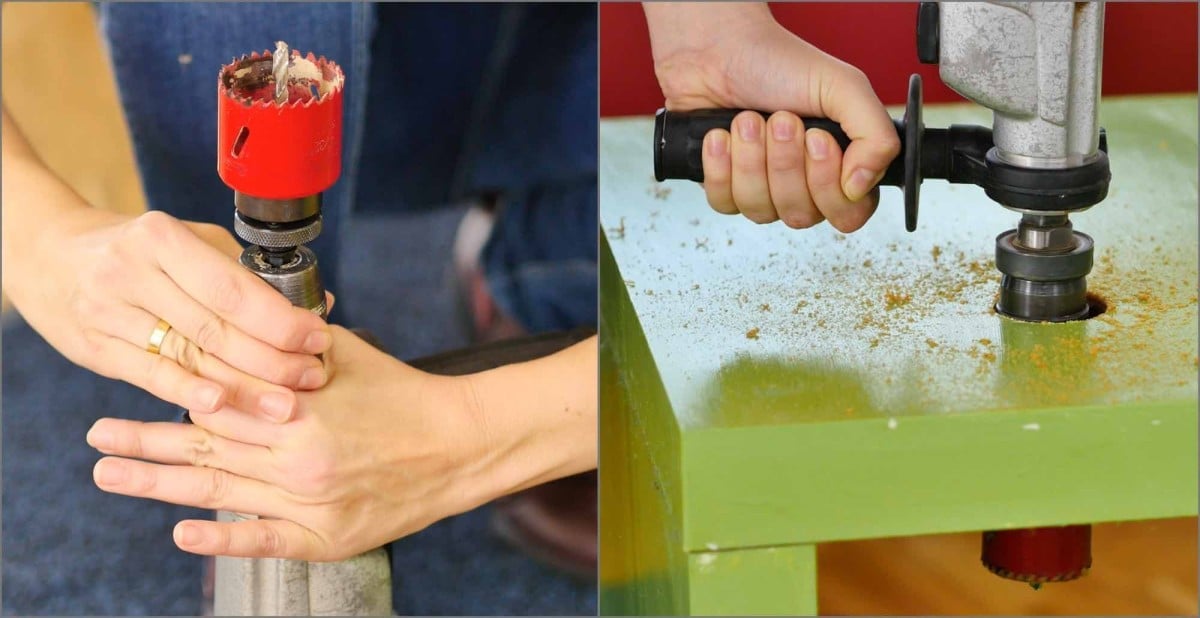![00_final]()
Our extended family has grown quite a bit over the years to include Cousin iPad, Auntie iPhone, Grannie Kindle, and that crazy Uncle Android. It’s a full house, and they’re hanging out on the kitchen counter, in the home office, and especially in the living room. Our wall plugs are always at their limit, jammed up with our smart “relatives”. We want more space for ourselves yet don’t want to be without our beloved family of devices.
Our Idea: a cool LACK coffee table with a charging station for 4 family members
We all have a soft spot for charming furniture with a used-look. This gave me the idea to create a coffee table with an integrated charging station and a fresh, shabby-chic paint job.
Our solution: I did my research and came across the tizi Tankstelle Toploader USB charging station, which could charge 4 gadgets simultaneously, manufacturer independent. I was over the moon with excitement! Now nothing stood in the way of my idea. I wanted a table with wheels, to make it more mobile, and saw that the LACK series from IKEA were cheap, easy to put together, and robust enough for my construction project. A shabby-chic look can be easily accomplished with a smidgen of skill, a touch of creativity, paint, and some sandpaper. Here’s how it went down…
You’ll need the following materials:
![01_you_need_jpg]()
• LACK coffee table, LACK Sofa Table, or a LACK TV Unit
• tizi Tankstation (Toploader) 4x USB charging station
• drill and a hole saw adapter (2 inches)
• some sandpaper
• colored varnish
• metal brackets and nails
• a hammer
• wheels (optional)
STEP 1: Preparation and painting
![02_grint]()
To get started, before you put it together, use the sandpaper on all surfaces of your coffee table to help give off the shabby-chic look and to make it easier for the paint to stick.
![03_paint]()
Then, paint all sides of the table with your chosen color of varnish. Now let the varnish dry overnight. Once the varnish is dry, the table can be assembled. I’ve added wheels to my table.
![04_mount]()
STEP 2: Preparation for the USB charging station into the LACK table
With a regular drill, drill a simple hole where you want your charging station to be located, so that you get a feeling for the drill.
Then attach your saw adapter (2 inches), and with a light, circular motion, drill a hole completely trough the surface of your LACK table.
![05_drill]()
Caution: Make sure to leave enough space from the hole to the edge of the table for better stabilization.
STEP 3: Finishing – a futuristic, retro, table with a charging station
Now you can roughen up the surfaces of your LACK table, to your liking (if you’ve decided for shabby look), using the sandpaper.
![06_used_look]()
Then attach the metal brackets with the nails. Place the 2 inch adapter ring into the newly drilled hole (comes with the tizi Tankstelle Toploader).
![07_insert]()
Finally, plug your Toploader into a wall socket, and you’re ready to start charging 4 USB gadgets as you chill!
Summary: Now the whole family can comfortably relax and recharge in our living room without having to bring their own chargers. Visitors are totally impressed by the cool table and even more blown away by the power hidden within it.
![08_done_02]()
If you’ve got the creativity bug, you’re sure to come up with many more clever ideas using IKEA furniture and the tizi Tankstelle Toploader USB charging station. I’ve even installed a Toploader into our IKEA kitchen counter!
![08_done_01]()
The post Equip a LACK coffee table with a built-in USB charging station appeared first on IKEA Hackers.
















































































































































